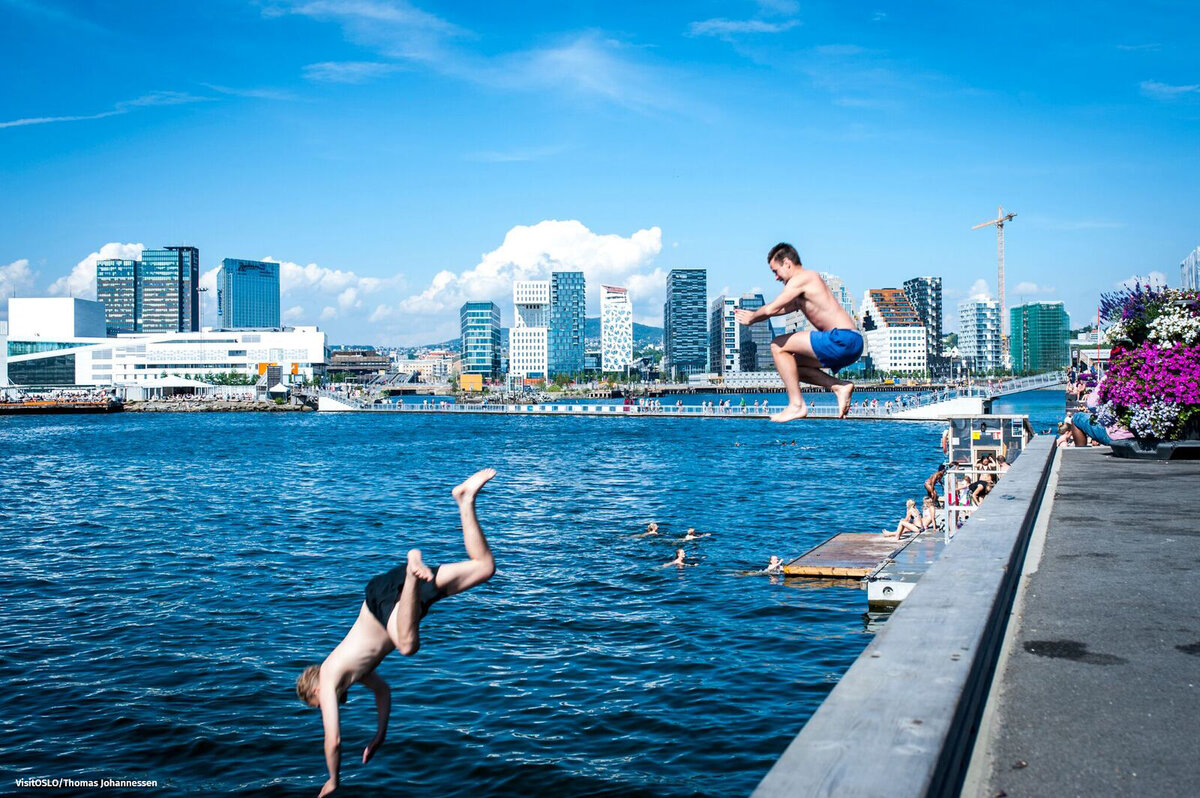Preparing for your incoming international employee
The contracts are signed and the date is set. You have a new international employee coming from abroad, but what needs to be sorted before they board that flight? Here is a checklist that will help you make their transition easier.
1. Securing their residence permit
If they are a Nordic citizen, they may travel freely to Norway without a residence permit. The only thing they need to do is to register in the National Population Register.
If they are an EU/EEA citizen, they are eligible to work in Norway without a residence permit. If they plan on staying longer than 6 months, they need to register their move to Norway with the Norwegian Directorate of Immigration (UDI) within 3 months after their arrival, as well as booking an appointment with the police. For the meeting with the police, they need to show up in person.
Non-EU/EEA citizen will need toapply for a visa or a resident permit, which allows them to work in Norway. A visa will make them eligible to enter Norway for a specific period of time, whereas a resident permit will give them citizenship for residence on a permanent basis.
Type of residence permit - which one to go for?
There are several different permits available to apply for, so they need to “keep their tongue straight in their mouth”, as we say in Norway - and take it step by step.
If they have completed higher education or vocational training, they will most likely be applying for a residence permit as a skilled worker. In order to obtain this, they will need to have received a job offer from you already.
Skilled workers who have not yet obtained a resident permit, can apply for an entry visa. They can read more about visas and permits at the Norwegian Directorate of Immigration (UDI). This might be useful for your new international employee to know in case they are bringing their partner or other family.
Some exceptions apply, for instance if their partner is an artist or if they are working for an organization who carries out international humanitarian work. In these cases they can stay for a total of 14 days or less without a working visa.
There are also separate rules for athletes, continental shelf workers and seafarers. They can read more about the exceptions to the visa rules at the Norwegian Directorate of Immigration (UDI).
For Ukranian asylum seekers, read more informationhere inEnglish,Ukranian orRussian.
2. Getting a D-number
A D-number is a temporary personal identification number, which allows your new employee to receive different services. It is typically granted to those who are planning on staying in Norway for less than 6 months.
If they are a EU/EEA citizen, they will most likely receive their D-number when they register to pay for taxes at the Tax Administration (Skatteetaten) upon securing employment.
For other internationals, they can apply for a D-number as soon as they have been granted a residence permit in Norway. When they have been granted a residence permit, they need to book an appointment with the police to order their residence card.
They can expect to receive your D-number about two weeks after the appointment with the police. There are also other organizations and institutions who can issue D-number -see the complete list here.
National identification number
Norway's eleven digit fødselsnummer (national identification number/birth number) is the national identity number used for all manner of administrative tasks in the country. Norwegians are assigned one at birth and immigrants must obtain one.
If your new employee is planning on working in Norway for more than 6 months, they can apply for a national identification number. The Norwegian Tax Administration assigns national identity numbers and decides whether they meet the conditions for being registered as a resident in Norway. They might also be given a personal identification number right away, depending on their situation.
A D-number and national identification number give them different types of rights and access to public services. They can read about the differenceshere.
3. Setting up a Norwegian bank account
As soon as your new employee has gotten a D-number or national identification number, they can open a Norwegian bank account. The easiest way to go about this, is to book an appointment with the bank they wish to set up a bank account with, or register online. They can choose whichever Norwegian bank they would like to sign up with. Most personal banking in Norway is done digitally these days, but there are still a few branches open for in-person meetings.
What should they bring to the bank?
For the meeting with the bank, they will need to bring their D-number or personal identification number, passport, proof of address and a passport photo. It's worth noting that the policies and requirements for opening bank accounts with a D-number may vary between banks, so it's a good idea to contact the bank directly to confirm their specific requirements.
After setting up an account, the bank will (hopefully) allocate them with Bank-ID (a personal electronic credential for secure identification and signing online) which they can use for bank transactions, including payments on public websites. A debit card will be issued, and a PIN will arrive in the post shortly after.
Norway is one of the many countries in the world who is considering going cashless. This can already be seen in society as very few will carry cash, and prefer Vipps instead.
How To Explain Vipps? Our Elevator Pitch
Vipps is a mobile payment app that's very popular in Norway, similar to Swish in Sweden or Venmo in the USA . It lets people send and receive money straight from their phones. They can use it to pay for stuff, split bills with their buddies, donate to their favorite causes, and even pay their bills. Loads of shops in Norway accept Vipps, so they can use it to buy all sorts of things both online and in real life. It's a total game-changer for anyone who wants to pay on the go!
4. Navigating the housing market in Oslo
There are several ways to find houses and apartments in Oslo to rent or buy. The easiest way to start is to have a look at online property marketplaces, such as Finn.no or Hybel.no.
They might also want to look at Facebook marketplaces and groups. Tell them to search for “Leie bolig i Oslo” (“Rental properties in Oslo”) and prioritize groups with many members and regular activity. There are also several letting agencies in Oslo, such as utleiemegleren.no and thoneiendom.no.
Make sure to tell them that they will need a Norwegian address – as well as a D-number or personal identification number, and proof of employment – in order to open up a bank account. Serviced apartments are an option for short-term housing until their documentation to rent long term is in order. For information on how to purchase a home in Norway, they can read more here.


Where to live?
Oslo is divided into 15 administrative districts known as "bydeler" in Norwegian. Each “bydel” has its own unique characteristics and attractions. Here are brief descriptions of some of the residential areas in Oslo:
Alna: a diverse and multicultural district, offering a mix of residential and industrial areas. It has a vibrant atmosphere and is well-served by public transportation. Alna also includes popular attractions such as the Alnaelva (river), which offers opportunities for outdoor activities and walking trails.
Bjerke: a residential district known for its peaceful environment and family-friendly neighborhoods. Bjerke also houses the Bjerke Racetrack, a popular venue for horse racing and various events.
Frogner: a prestigious and affluent area in Oslo. It is characterized by its elegant residential buildings, spacious parks, and exclusive boutiques. The district is home to the famous Vigeland Sculpture Park.
Gamle Oslo: Located in the city center, Gamle Oslo combines historical charm with a vibrant urban atmosphere. It features iconic landmarks like the Oslo Opera House, the medieval ruins of Oslo Old Town (Gamlebyen), and the new and upcoming Bjørvika area, including Sørenga and Bjørvika.
Grorud: Situated in the northeastern part of Oslo, Grorud is known for its residential areas and green spaces. The district offers a tranquil and family-friendly environment, with easy access to outdoor activities and recreational facilities.
Grünerløkka: a vibrant and trendy neighborhood with a bohemian atmosphere. It is famous for its artistic vibe, colorful street art, trendy boutiques, cafes, and bars. Grünerløkka is a popular choice for young professionals and creatives seeking a lively and dynamic living environment.
Nordre Aker: Loffers a mix of residential areas, parks, and recreational facilities. It is characterized by its tranquil and family-friendly environment, with attractions like the popular Nordmarka forest, great for outdoor activities such as hiking and skiing. Grefsenkollen is a great place to hike, but also for a Sunday hike og waffles with a view.
Nordstrand: a residential district situated along the Oslo Fjord in the southern part of the city. It features charming residential areas, waterfront views, and a relaxed atmosphere. Nordstrand is known for its beautiful beaches, such as Hvervenbukta, and proximity to nature, including the scenic Ekeberg Park.
Sagene: a vibrant and diverse district located northwest of the city center. It is known for its mix of residential areas, parks, and cultural attractions. Sagene includes Torshov, a popular place to live among urban families, and the Torshov Park is known for its views and laid back feeling.
St. Hanshaugen: Situated on a hill overlooking the city center. It offers a youthful atmosphere with a mix of residential areas, parks, and recreational spaces. St. Hanshaugen Park, the district's namesake, is a popular spot for picnics and outdoor gatherings. Even outdoor movies during summer!
Stovner: Located in the northeastern part of Oslo and is primarily a residential area. It offers a family-friendly environment with a mix of apartment complexes and single-family homes. Stovner also has the Stovner Center, a shopping mall serving the local community.
Søndre Nordstrand: a district located in the southern part of Oslo, known for its diverse cultural landscape and green spaces. It encompasses both residential and industrial areas, offering a mix of housing options.
Ullern: an affluent residential district located in the western part of Oslo. It is characterized by its spacious and elegant residential properties, lush gardens, and quiet streets. Ullern offers a high standard of living and a peaceful environment, with easy access to amenities and services.
Vestre Aker: Known for its spacious residential areas, leafy streets, and proximity to nature. The district includes the famous Holmenkollen neighborhood, renowned for its iconic ski jump and Nordmarka forest, which offers ample opportunities for outdoor activities such as hiking, skiing, and cycling.
Østensjø: Offers a mix of residential areas, green spaces, and small lakes. It provides a peaceful and suburban living environment with a strong sense of community. Østensjø is ideal for families and nature enthusiasts, offering easy access to parks, forests, and outdoor recreational facilities.
5. What about their Spouse/partner? tips and tricks for relocating as a family
Your new employee might not want to move to Oslo on their own. Maybe they have a spouse/partner, or children, that they want to bring along. EU/EEA citizens and their family members can reside and work in the country without a visa or resident permit, while other internationals can apply for a Family Reunification, or residence permit.
Families of other internationals may also be eligible to stay in Norway. Their spouse, registered partner, cohabitation partner and/or child can apply for a Family Reunification, providing your new employee has already obtained a Norwegian resident permit. They will also have to earn more than a specific amount pre-tax, and have a suitable place to live in order for their family to join them. They can read more about the different types of visas their family can apply for, depending on what sort of resident permit they hold themselves, on the Norwegian Directorate of Immigration (UDI).




